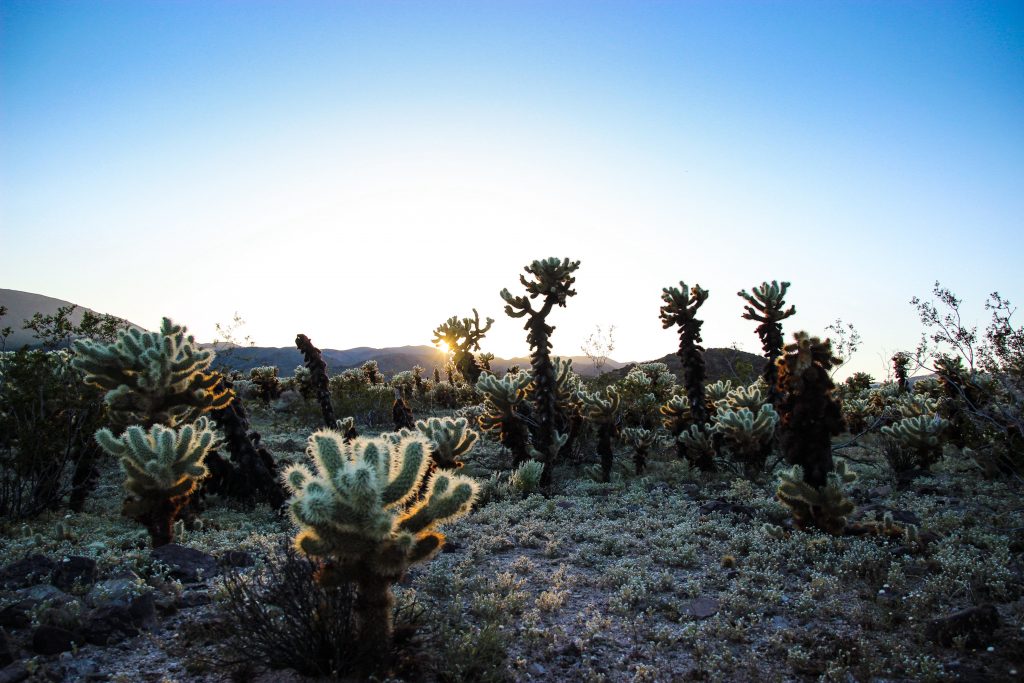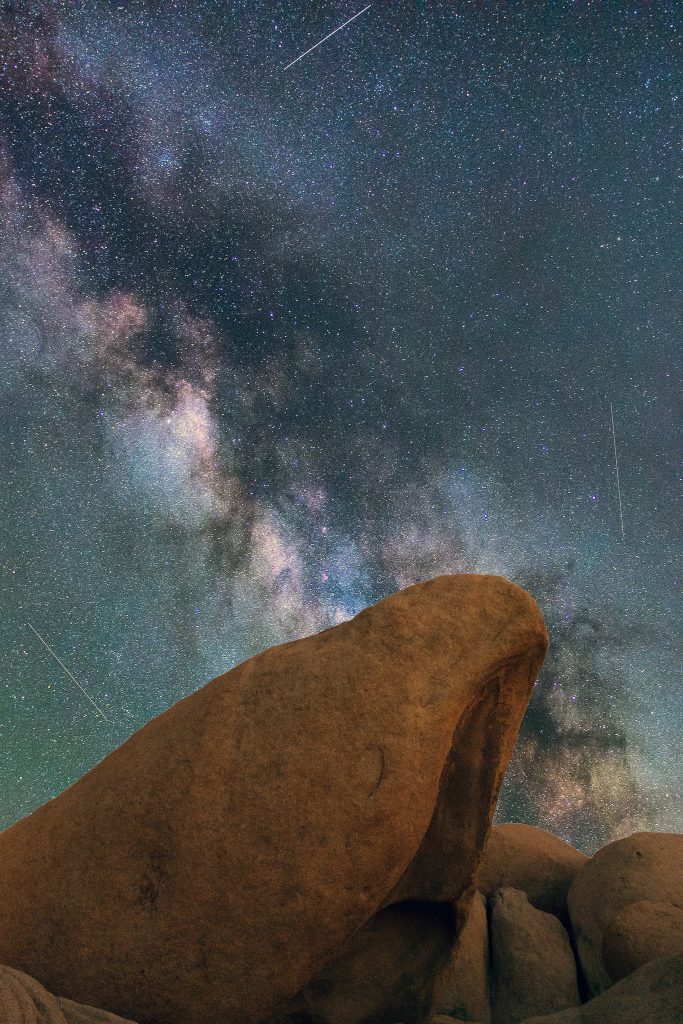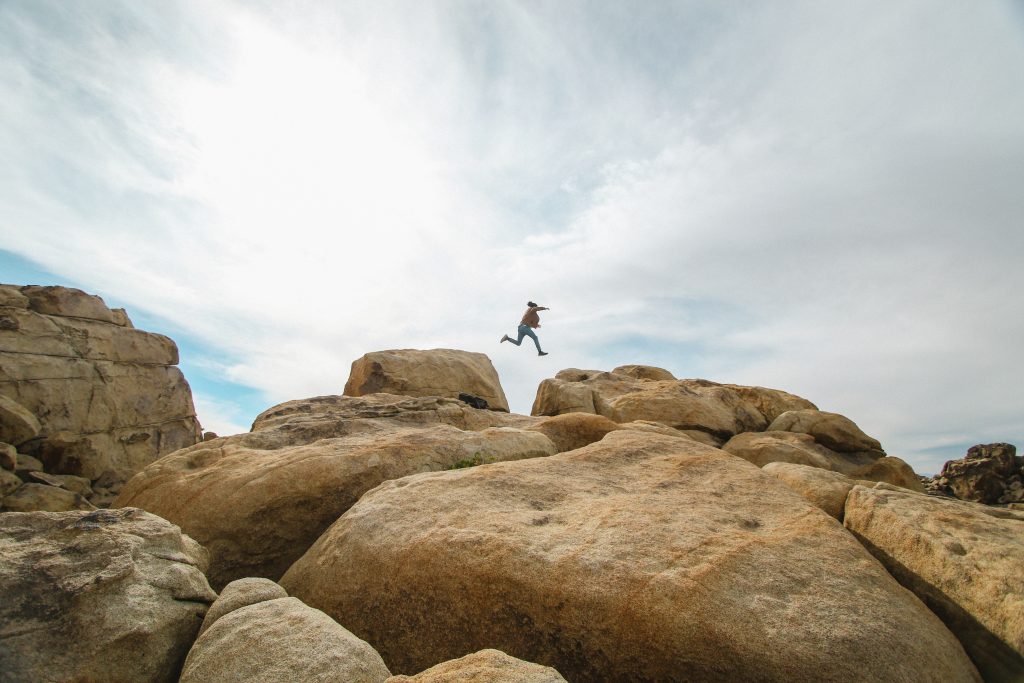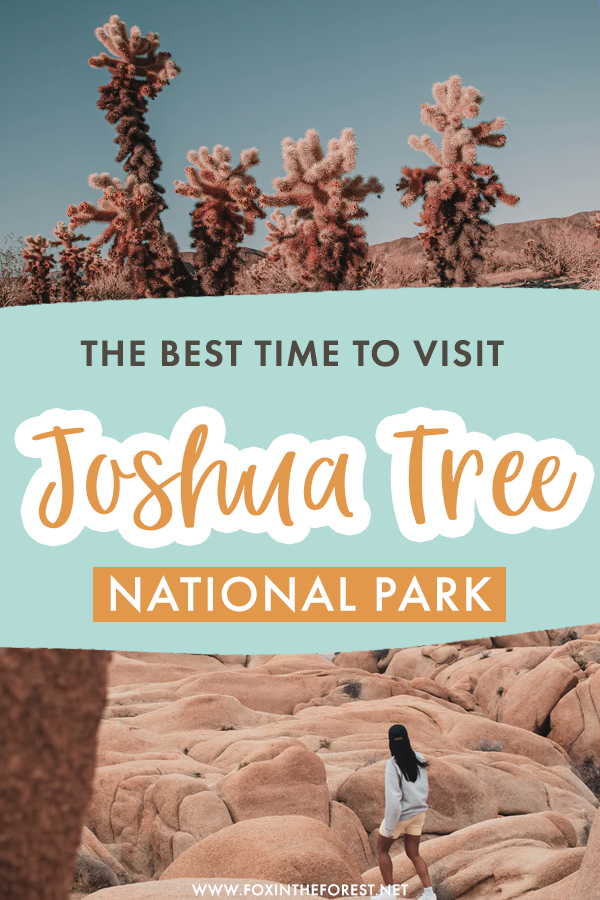Last Updated on April 21, 2024 by foxintheforest
The stunning desert terrain of Joshua Tree National Park is popular for a good reason. However, you’ll want to know the best time to visit Joshua Tree National Park before you go.
Featuring dark, starry skies, weird rock formations, and plenty of natural beauty, Joshua Tree must be on your to-visit list. This park brings some of the wildest and weirdest desert scenery right to your fingertips.
When is the Best Time to Visit Joshua Tree National Park?
The best time to visit Joshua Tree is in the early spring (March-May) or late fall (October-November).
This is when you’ll experience the most pleasant temperatures in the park for hiking, climbing, or other adventures. The days will still be fairly warm, but not unbearable, and the temperatures at night will drop for perfect cool camping weather.
Of course, the downside to visiting Joshua Tree during spring and fall is that a lot of other people will have the same idea. These are definitely the most popular times to visit Joshua Tree, so you will find crows in the park.

Winter can also be a good time to visit Joshua Tree, with the added advantage of potentially smaller crowds. The Joshua Tree weather can actually be fairly nice with moderate temps in the winter, especially on sunny days.
However, in the dead of winter, it can get very cold – think below freezing kind of cold. There are also more storms in the winter, and it might even snow!
If intense heat isn’t something you can handle, avoid visiting Joshua Tree in the summer. J-Tree is a desert, and it hits extreme temperatures (above 100 degrees Fahrenheit) during the hottest time of the year.
What Are the Hours for Joshua Tree National Park?
Joshua Tree National Park is open year-round, and all three entrances – West, North, and South – are open 24 hours a day.
But be aware that occasionally the park is closed for extenuating circumstances such as bad weather, government shutdowns, and stay-at-home orders. Always double check that the park is operating normally before you make a visit.

How Many Days Should I Plan to Visit Joshua Tree National Park?
Joshua Tree is a massive park covering nearly 800,000 acres, so you should plan at least a few days to explore as much as you can.
Two days is the absolute minimum I would recommend to see just the highlights of Joshua Tree, but you wouldn’t run out of things to do in Joshua Tree even if you spent a full week there.
Pro Tip: Visiting more than 3 national parks in a year? Consider purchasing the America the Beautiful Annual Parks Pass.
How to Avoid Crowds at Joshua Tree National Park
If you can handle the heat, summer is the least crowded time to visit Joshua Tree. But if the scorching temps are too much, here are a few other useful tips to avoid the crowds at the park:
- Visit Joshua Tree on a summer evening. It won’t be quite as hot, and the daylight lasts longer, so you’ll have some time to see the sights before catching a beautiful sunset at Keys View Overlook.
- Try for a sunny winter day. Or even brave a chillier winter day by bringing plenty of layers. If it snows, you’ll get a unique view of Joshua Tree.
- Head into the backcountry. While the main trails and campgrounds might be overflowing during peak season, you can register to backcountry camp and find a little space.
- Head out on the most popular hikes early. The majority of people arrive at the park around 10am, so you’ll find less crowded trails on hikes like Skull Rock and Cholla Cactus Garden first thing in the morning.

The Best Time to Visit Joshua Tree For:
- Hiking: Hit the best hikes Joshua Tree either when temps cool down in the fall or during mild spring weather. If you want to hike in the summer, plan to get started early or hike at night to avoid the brutal midday summer sun.
- Climbing: Spring offers the best send temps on the granite of Joshua Tree. Since the climbing here relies a lot on friction, you want cooler temps to keep from greasing off.
- Mountain Biking: Avoid the heat by biking the trails just outside the National Park boundaries in either spring or fall. Biking in the park is only allowed on roads where vehicles are permitted, not on trails.
- Camping: Winter is when you’ll have the best chance of scoring a campsite at one of the popular campgrounds in the park, most of which are first-come, first served.
- Stargazing: Warm summer nights are wonderful for sitting outside and taking in the dark skies. Although when the days get shorter in the fall, you’ll have more time to stare at constellations.
- Wildflowers: Spring is when the desert of Joshua Tree explodes with color. Joshua trees actually bloom with flowers, as do a variety of cacti.
- Bird Watching: Spring beckons a variety of birds for nesting season, and if you’re lucky, you can catch turkey vultures sleeping in the trees at the Oasis of Mara. Winter also brings different species of birds migrating to Joshua Tree, and they usually will stay until March.
Plan Your Trip to Joshua Tree with These Resources:
- Your Guide to Visiting Joshua Tree National Park
- Best Things to Do in Joshua Tree National Park (coming soon)

